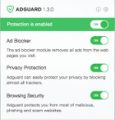What is EssentialElement
EssentialElement is supposed to be an app that will improve the browsing experience, but according to security experts, this program is an adware. Adware is a type of invasive programs — which can infect computers — often redirect the internet browser to certain web-pages so the creators of those sites can get profit by displaying ads to visitors. It is not a good idea to have installed adware. The reason for this is simple, it doing things you do not know about. And of course you completely do not know what will happen when you click anything in the the adverts.
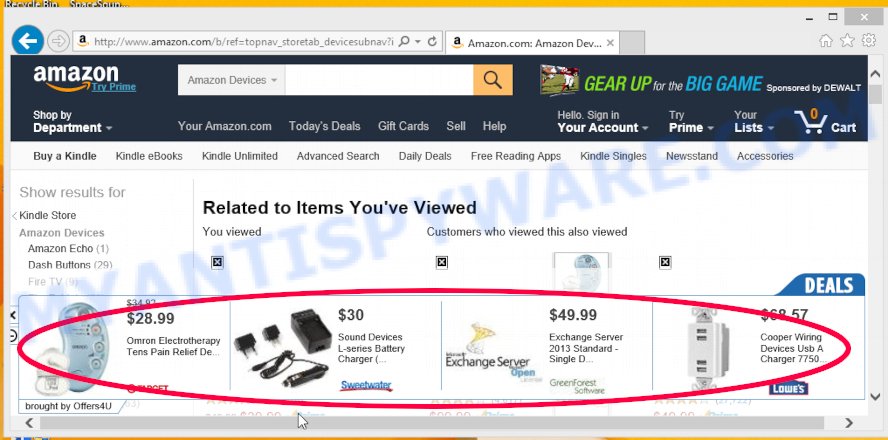
Unwanted ads
Does adware steal your privacy information? Adware may monetize its functionality by collecting sensitive info from your surfing sessions. This confidential info, afterwards, can be easily sold to third party companies. This puts your privacy information at a security risk.
Adware is usually written in ways common to malware, spyware and hijackers. In order to get rid of EssentialElement adware, you will need execute the steps below or use free adware removal utility listed below.
How does EssentialElement get on your Apple Mac
The majority of adware is bundled with freeware or even paid software which Internet users can easily download online. The install packages of such programs, in many cases, clearly display that they will install additional apps. The option is given to users to stop the install of any bundled apps. So, in order to avoid the install of any adware: read all disclaimers and install screens very carefully, choose only Custom or Advanced install option and disable all bundled applications in which you are unsure.
Threat Summary
| Name | EssentialElement, EssentialElement 1.0 app |
| Type | adware, potentially unwanted application (PUA), pop-ups, pop-up virus, popup ads |
| Symptoms |
|
| Removal | EssentialElement removal guide |
How to remove EssentialElement from Mac computer
There present several free adware removal utilities. Also it is possible to get rid of EssentialElement adware manually. But we recommend to combine all these ways below into the one removal algorithm. Follow the steps of the guidance. Certain of the steps will require you to reboot your computer or close this web page. So, read this guidance carefully, then bookmark this page or open it on your smartphone for later reference.
To remove EssentialElement, perform the following steps:
- Remove profiles created by EssentialElement
- Uninstall EssentialElement related applications through the Finder
- Remove EssentialElement related files and folders
- Scan your Mac with MalwareBytes
- Remove EssentialElement from Safari, Chrome, Firefox
- How to stay safe online
- Finish words
Remove profiles created by EssentialElement
EssentialElement can make changes to the Mac system such as malicious changes to browser settings, and the addition of malicious system profiles. You need to check the system preferences, find and remove malicious profiles and ensure your settings are as you expect.
Click the System Preferences icon ( ![]() ) in the Dock, or choose Apple menu (
) in the Dock, or choose Apple menu ( ![]() ) > System Preferences.
) > System Preferences.
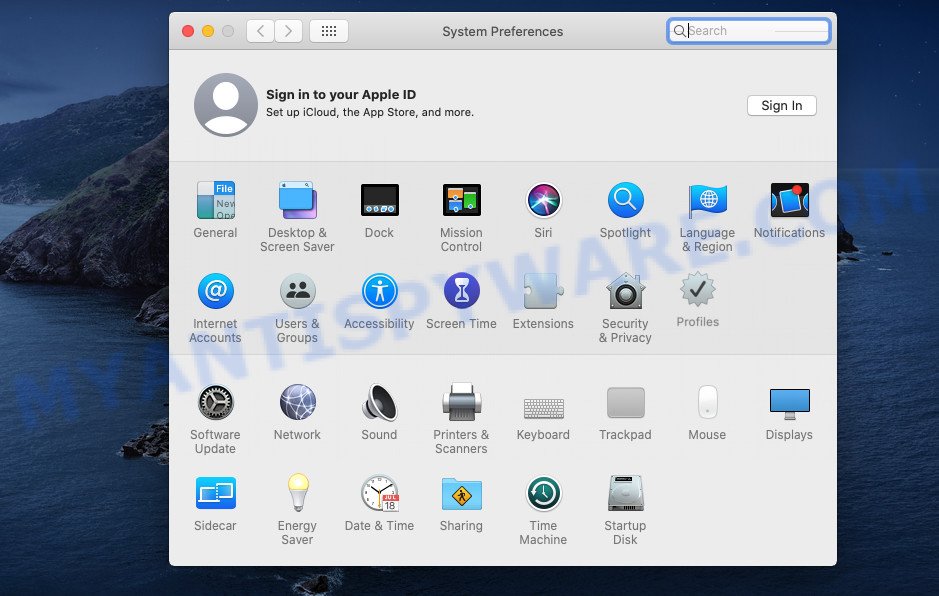
In System Preferences, click Profiles, then select a profile related to EssentialElement.
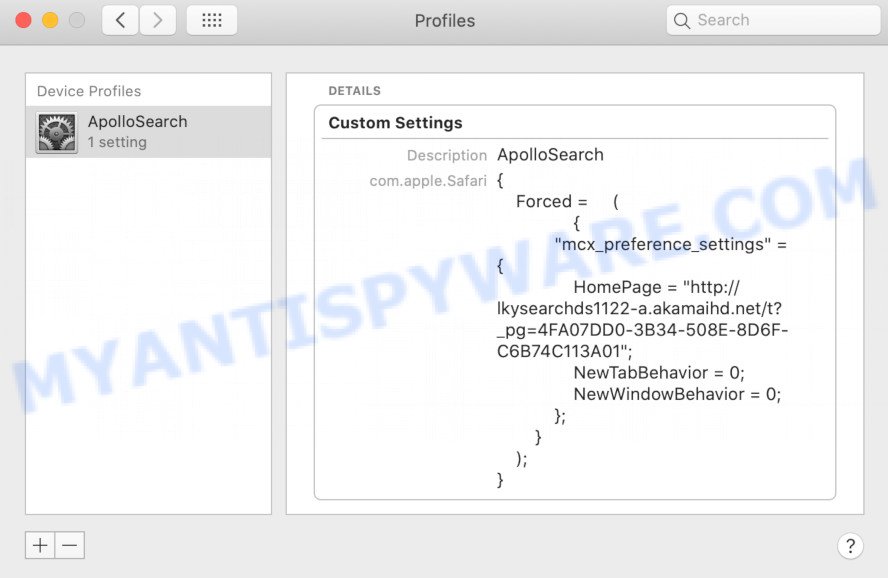
Click the minus button ( – ) located at the bottom-left of the Profiles screen to remove the profile.
Note: if you do not see Profiles in the System Preferences, that means there are no profiles installed on your Mac device, which is normal.
Uninstall EssentialElement related applications through the Finder
In order to delete potentially unwanted programs, browser hijackers and adware, open the Finder and click on “Applications”. Check the list of installed applications. For the ones you do not know, run an Internet search to see if they are browser hijackers, adware and potentially unwanted programs. If yes, remove them off. Even if they are just a applications that you do not use, then uninstalling them off will increase your MAC start up time and speed dramatically.
Open Finder and click “Applications”.
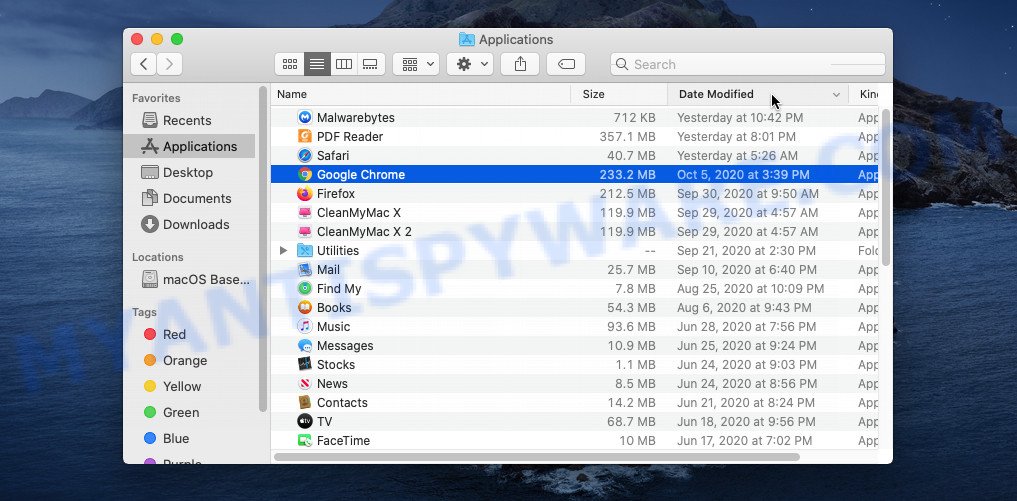
Very carefully look around the entire list of applications installed on your MAC OS. Most probably, one of them is the EssentialElement adware. Once you’ve found a suspicious, unwanted or unused program, right click to it and choose “Move to Trash”. Another solution is drag the program from the Applications folder to the Trash.
Don’t forget, select Finder -> “Empty Trash”.
Remove EssentialElement related files and folders
Now you need to try to find EssentialElement related files and folders, and then delete them manually. You need to look for these files in certain directories. To quickly open them, we recommend using the “Go to Folder…” command.
Click on the Finder icon. From the menu bar, select Go and click “Go to Folder…”. As a result, a small window opens that allows you to quickly open a specific directory.

Check for EssentialElement generated files in the /Library/LaunchAgents folder

In the “Go to Folder…” window, type the following text and press Go:
/Library/LaunchAgents
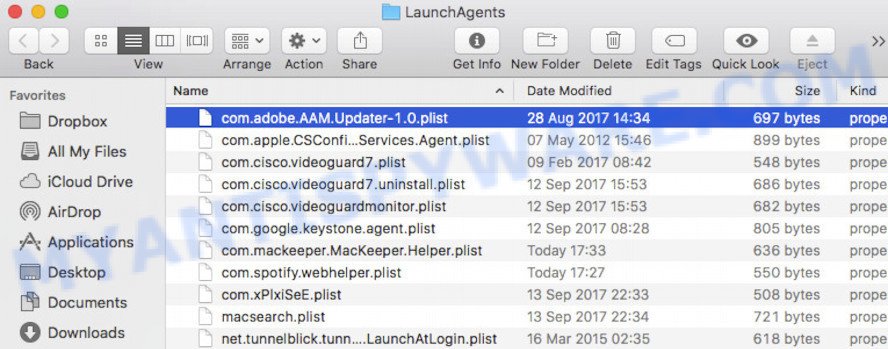
This will open the contents of the “/Library/LaunchAgents” folder. Look carefully at it and pay special attention to recently created files, as well as files that have a suspicious name. Move all suspicious files to the Trash. A few examples of files: macsearch.plist, EssentialElement.plist, search.plist, installapp.plist and com.machelper.plist. Most often, PUPs, browser hijackers and adware create several files with similar names.
Check for EssentialElement generated files in the /Library/Application Support folder

In the “Go to Folder…” window, type the following text and press Go:
/Library/Application Support
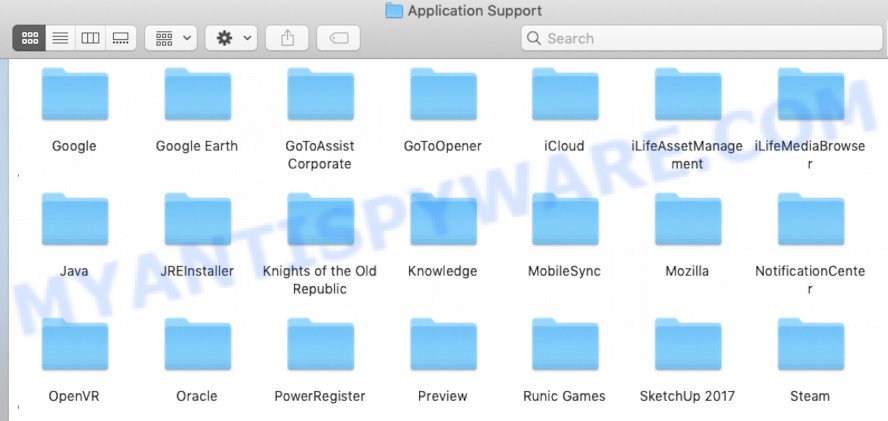
This will open the contents of the “Application Support” folder. Look carefully at its contents, pay special attention to recently added/changed folder. Move all suspicious folders to the Trash.
Check for EssentialElement generated files in the “~/Library/LaunchAgents” folder

In the “Go to Folder…” window, type the following text and press Go:
~/Library/LaunchAgents

Proceed in the same way as with the “/Library/LaunchAgents” and “/Library/Application Support” folders. Look for suspicious and recently added files. Move all suspicious files to the Trash.
Check for EssentialElement generated files in the /Library/LaunchDaemons folder
In the “Go to Folder…” window, type the following text and press Go:
/Library/LaunchDaemons

Carefully browse the entire list of files and pay special attention to recently created files, as well as files that have a suspicious name. Move all suspicious files to the Trash. A few examples of files to be deleted: com.machelper.plist, com.EssentialElement.plist, com.search.plist, com.installapp.plist and com.macsearch.plist. In most cases, adware, PUPs and browser hijackers create several files with similar names.
Scan your Mac with MalwareBytes
Manual EssentialElement removal requires some computer skills. Some files and system entries that created by the adware can be not fully removed. We recommend that run MalwareBytes Anti Malware to scan the Mac device. Moreover, this application will help you to remove PUPs, browser hijackers, adware and toolbars that your MAC can be affected too.
Download MalwareBytes Free from the link below.
21017 downloads
Author: Malwarebytes
Category: Security tools
Update: September 10, 2020
When the downloading process is complete, close all windows on your computer. Further, start the saved file. Follow the prompts.
The MalwareBytes Free will automatically start and you can see its main window as shown in the following example.
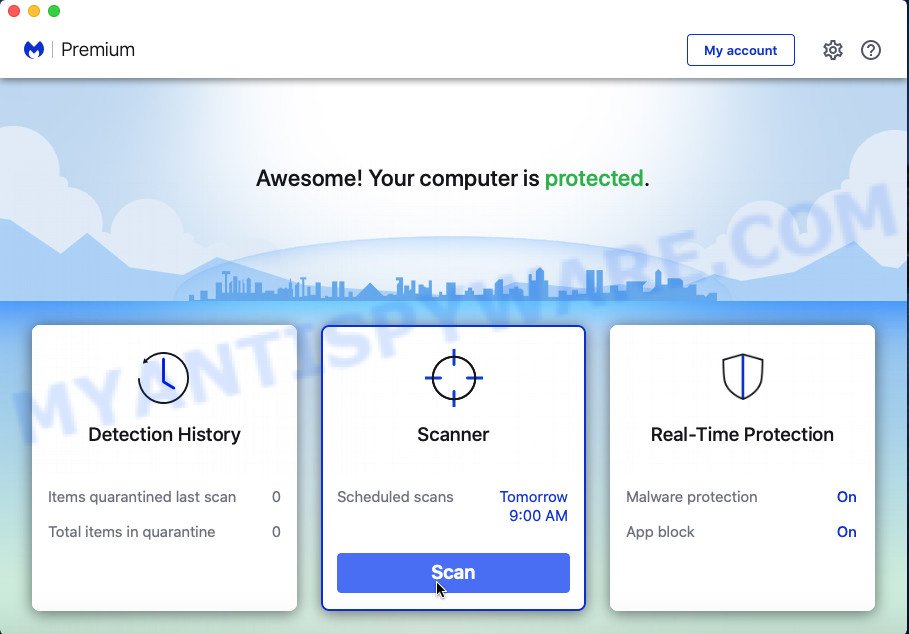
Next, click the “Scan Now” button to perform a system scan for the EssentialElement adware software. This task can take some time, so please be patient. While the MalwareBytes Anti Malware (MBAM) is checking, you may see how many objects it has identified either as being malware.
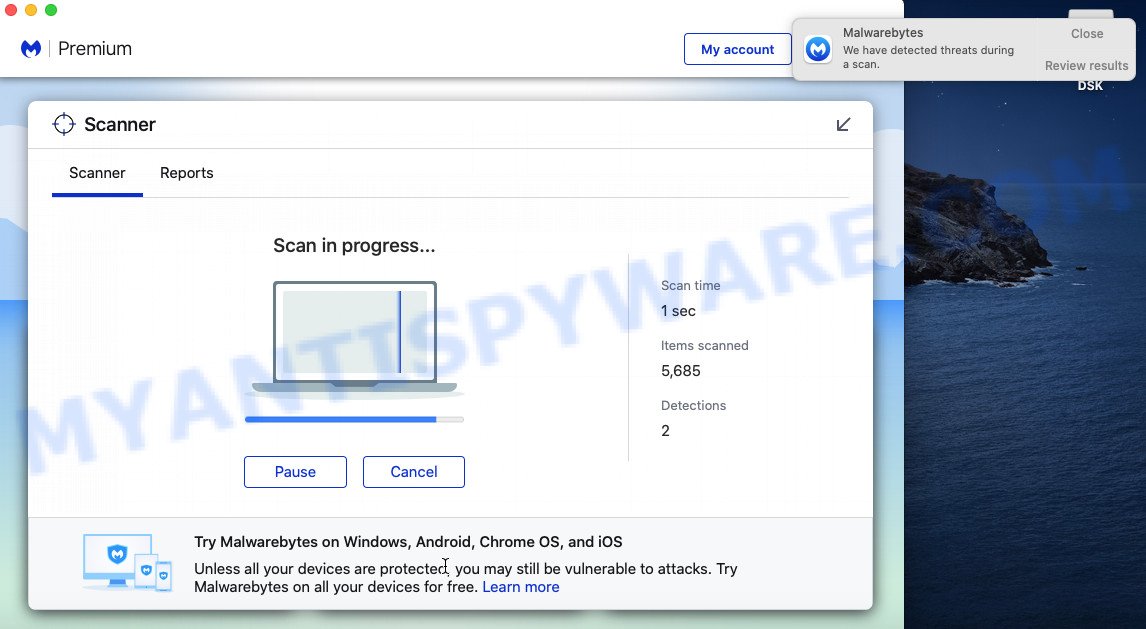
Once MalwareBytes Anti Malware (MBAM) completes the scan, you will be shown the list of all found items on your MAC. Review the scan results and then click the “Quarantine” button.
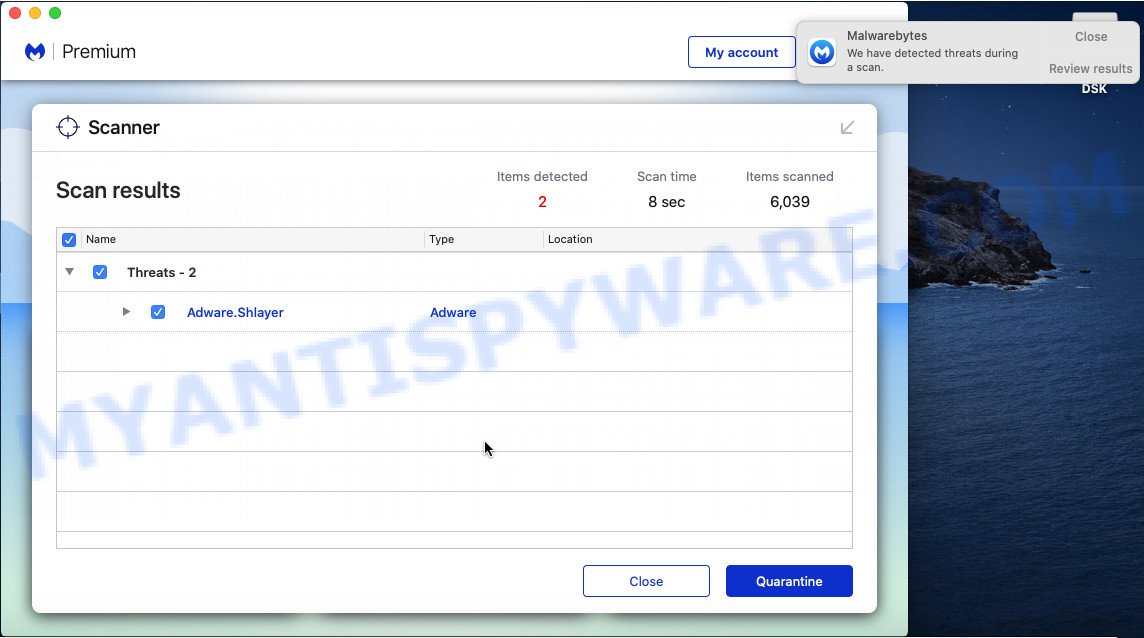
The MalwareBytes Anti Malware (MBAM) will begin to delete EssentialElement adware software.
Remove EssentialElement from Safari, Chrome, Firefox
If you’re still seeing unwanted ads that won’t go away, you might have malicious add-ons installed on your browser. Check your web-browser for unwanted extensions using the steps below.
You can also try to remove EssentialElement by reset Chrome settings. |
If you are still experiencing issues with EssentialElement adware removal, you need to reset Mozilla Firefox browser. |
|
How to stay safe online
One of the worst things is the fact that you cannot block all harmful web-sites using only built-in Microsoft Windows capabilities. However, there is a application out that you can use to stop annoying internet browser redirects, advertisements and pop ups in any modern browsers including Firefox, Safari and Chrome. It is called Adguard and it works very well.
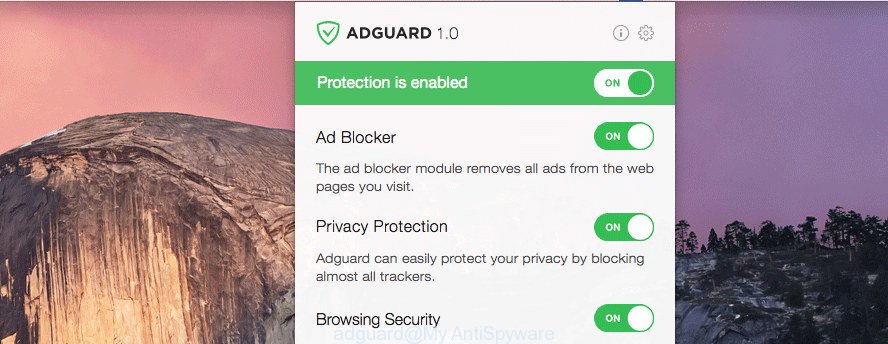
Installing the AdGuard is simple. First you’ll need to download AdGuard on your Microsoft Windows Desktop by clicking on the link below.
3779 downloads
Author: © Adguard
Category: Security tools
Update: January 17, 2018
When the downloading process is complete, run the downloaded file. The “Setup Wizard” window will show up on the computer screen.
Follow the prompts. AdGuard will then be installed. A window will show up asking you to confirm that you want to see a quick instructions. Press “Skip” button to close the window and use the default settings, or click “Get Started” to see an quick instructions that will allow you get to know AdGuard better.
Each time, when you run your Apple Mac, AdGuard will run automatically and stop undesired pop up ads, block harmful and misleading webpages.
Finish words
Now your Apple Mac should be free of the EssentialElement adware. We suggest that you keep AdGuard (to help you stop unwanted pop-up ads and unwanted harmful web-sites) and MalwareBytes Anti Malware (MBAM) (to periodically scan your MAC system for new adwares and other malware).
If you are still having problems while trying to get rid of EssentialElement from the Safari, Firefox and Google Chrome, then ask for help here here.

